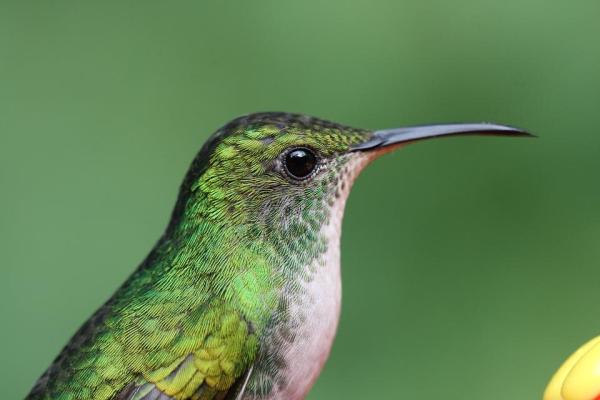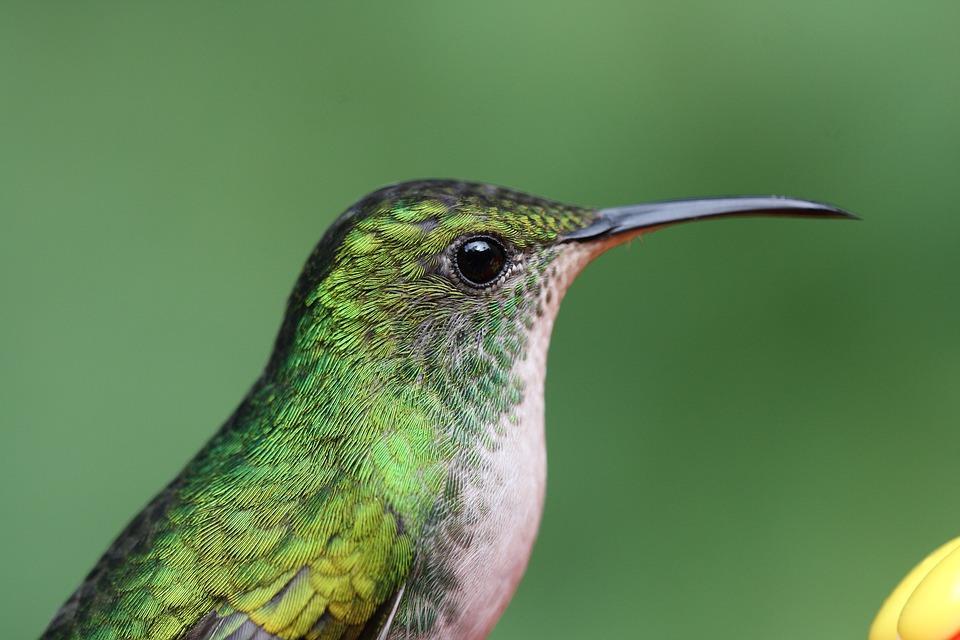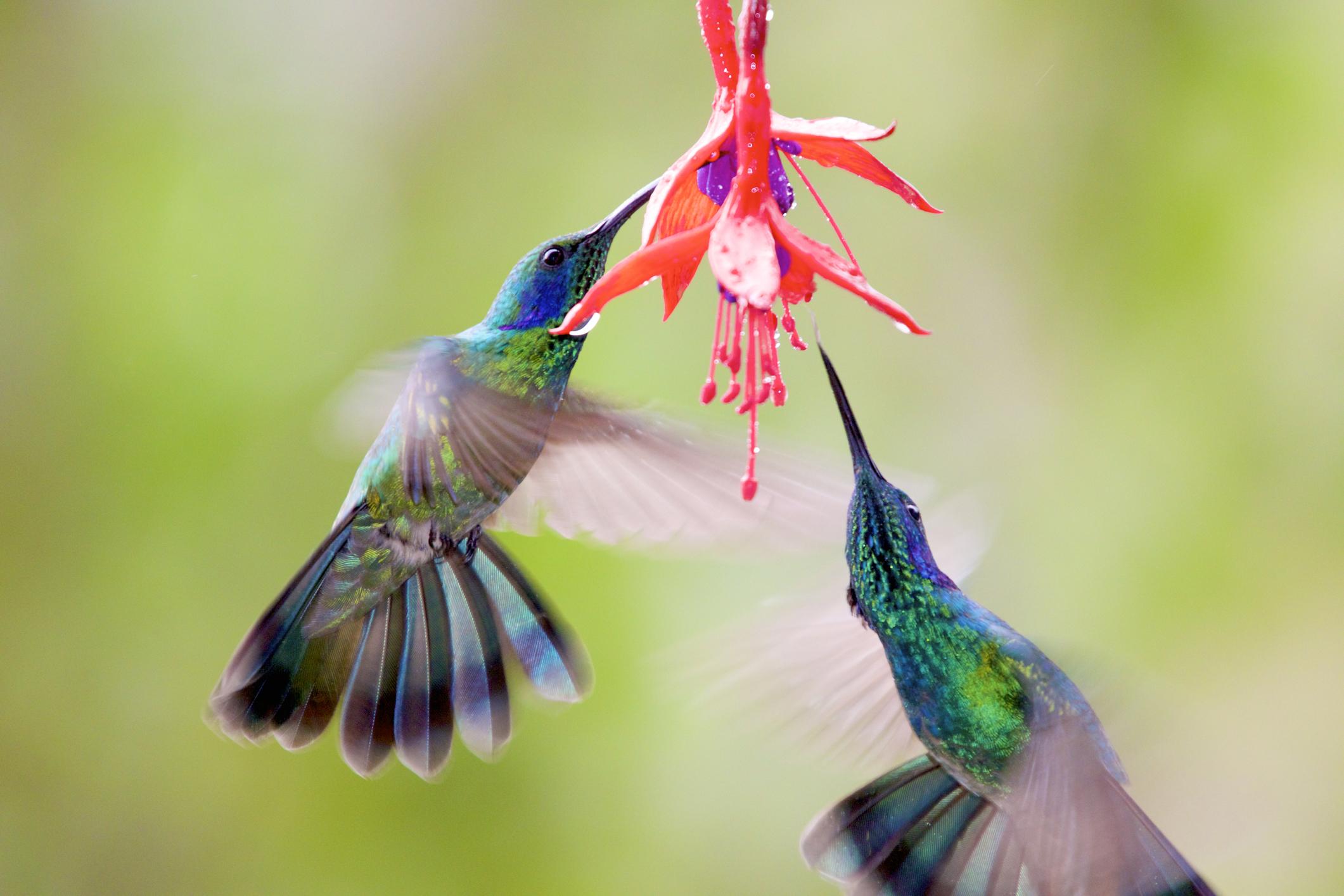How Do Hummingbirds Manage to Flap Their Wings So Fast?


Hummingbirds, are known by their vibrant colors and aerial acrobatics. Hummingbirds boast the fastest wing beats of any bird, a remarkable adaptation that fuels their unique flight style. Beyond their flight capabilities, hummingbirds play a crucial role in the ecosystems they inhabit. As pollinators, they facilitate the reproduction of numerous flowering plants, contributing to the health and stability of their environments.
In this article, we'll delve into the science behind these rapid wing beats, exploring how hummingbirds achieve this feat and why it's so crucial for their survival. We'll also discover how their unique wings and high metabolism allow them to flit from flower to flower, playing a vital role in the ecosystem.
What are hummingbirds?
The Americas are home to over 300 species of hummingbirds, with the greatest diversity in Central America. Their distinctive "hum" comes from rapid wing beats that allow them to hover mid-air, a feat unmatched by most birds.
Nectar, a sugary liquid produced by flowers, forms the core of a hummingbird's diet. Rich in sugars like sucrose and fructose, nectar provides the energy needed for their incredibly fast metabolism and rapid wing beats. This rapid metabolism allows them to maintain body temperature despite their small size, which inherently leads to faster heat loss. However, this high energy expenditure necessitates frequent feeding – hummingbirds can visit hundreds of flowers per day, consuming large quantities of nectar in short bursts.
Nature has equipped hummingbirds with specialized tools for their nectar based diet. Their long, slender beaks provide access to deep recesses within flowers, reaching nectar that other pollinators might miss. Their tongues are equally remarkable – often forked and fringed – these specialized tools efficiently collect and lap up the sweet nectar.
Hummingbirds are the smallest birds on Earth, with the bee hummingbird measuring a mere 2.17 inches (5.5 centimeters) from beak to tail.
To compensate for the increased heat loss associated with a smaller body, hummingbirds have evolved a remarkably high metabolic rate. This allows them to generate enough energy for both maintaining body temperature and powering their rapid movements.
Hummingbirds play a vital role in the ecosystem as pollinators. As they flit from flower to flower in search of nectar, their bodies brush against pollen-bearing parts of the plants. These pollen grains then hitch a ride on the hummingbird's feathers, getting transferred to other flowers of the same species. This transfer of pollen facilitates fertilization and seed production, ensuring the reproduction of these flowering plants. It's a mutually beneficial relationship – flowers offer a sweet reward (nectar), and hummingbirds, in turn, ensure the continued existence of the plants they rely on for sustenance.
Learn about other animals that also pollinate in this other article.

How fast do hummingbirds flap their wings?
Unlike most birds, hummingbirds don't rely on gliding or flapping their wings in a single plane of motion. Instead, their unique wing muscles and skeletal structure allow them to rotate their wings nearly 180 degrees with each beat. This rapid back-and-forth motion creates lift and thrust, enabling hovering, agile maneuvering, and even flying backwards.
During regular flight, a hummingbird's wings can beat anywhere from 50 to 80 times per second. This rapid pace already surpasses the wing beat of most birds, allowing hummingbirds to achieve surprising speeds for their size (20-30 mph).
But the real marvel lies in hovering. To hang suspended in mid-air while sipping nectar from flowers, some hummingbird species can reach a mind-blowing wing beat frequency of 200 times per second. This rapid wing movement requires immense energy expenditure, which is why hummingbirds have incredibly high metabolisms and need to consume nectar frequently.

Why hummingbirds flap their wings so fast?
You might wonder why hummingbirds expend so much energy on such rapid wing movements. The main reason is that this ability is crucial for hummingbirds to access nectar deep within flowers. By beating their wings at such a high speed, they essentially create a pocket of still air that allows them to remain suspended mid-flight while feeding.
The rapid back-and-forth wing motion provides exceptional control and agility. This allows hummingbirds to navigate complex floral structures, dart in and out of tight spaces, and perform elaborate aerial displays during courtship or territorial defense.
Hummingbird bodies are incredibly small, with limited wing surface area compared to larger birds. This necessitates faster wing beats to generate sufficient air pressure for lift. In simpler terms, imagine a tiny helicopter compared to a larger one. The smaller helicopter needs its blades to spin much faster to stay airborne due to its reduced lifting surface. Similarly, hummingbirds overcome their diminutive size through rapid wing beats.
This high wing beat frequency comes at a cost. It requires immense energy expenditure, which explains why hummingbirds have one of the highest metabolic rates of any animal. They need to consume nectar frequently to maintain this energy-intensive lifestyle.
How do hummingbird's wings work?
Hummingbirds achieve their incredible feat of rapid wing beats thanks to a unique wing anatomy unlike most birds.
Unlike the long, fixed wings of eagles or the broad wings of hawks, hummingbird wings are miniature and elongated. This allows for faster and more frequent strokes. Additionally, the wings are not flat, but have a slightly twisted shape that helps generate lift during both the upstroke and downstroke, maximizing efficiency.
Hummingbird flight muscles, particularly the pectoralis major, are massive compared to their body size. These powerful muscles contract incredibly fast, providing the force for the rapid wing beats.
Unlike most birds, a hummingbird's elbows and wrists are fused, limiting their wing movement to a plane up and down. However, their shoulder joint has an extraordinary range of motion, allowing the wings to rotate nearly 180 degrees with each beat. This rotation, combined with the wing shape, creates the lift necessary for hovering and maneuverability.

How fast does a hummingbird's heart beat?
A hummingbird's heart can beat anywhere from 500 to 1,200 beats per minute (bpm). This varies depending on the species and activity level. For comparison, a human at rest has a heart rate of around 60-100 bpm, and even a fit athlete during exercise might reach a maximum of 150-200 bpm. This highlights the extraordinary metabolic rate of hummingbirds, requiring a rapid heart rate to keep up with their energy demands.
There are a few key reasons why hummingbirds have such a high heart rate, but the main one is that hummingbirds have the highest metabolic rate of any warm-blooded animal. They constantly need to convert food (nectar) into energy to fuel their rapid wing beats and maintain their body temperature. A fast heart rate ensures efficient blood circulation and oxygen delivery throughout their tiny bodies.
Furthermore, the energy expenditure of hovering and maneuvering at high speeds requires a rapid supply of oxygen and nutrients. The fast heart rate helps meet these demands.
Finally, despite their small size, hummingbirds need to maintain a constant body temperature to regulate their internal processes. The fast heart rate helps circulate warm blood throughout their bodies to counteract heat loss from their high surface area-to-volume ratio.
Did you know these amazing bird facts are just the tip of the iceberg? Dive deeper into the world of birds with even more incredible facts in another article on our site.

If you want to read similar articles to How Do Hummingbirds Manage to Flap Their Wings So Fast?, we recommend you visit our Facts about the animal kingdom category.
- Altshuler, DL, Dudley, R., & Ellington, CP 2004. Aerodynamic forces of revolving hummingbird wings and wing models. Journal of zoology, 264(4), 327 - 332.
- Altshuler, DL, Dudley, R., Heredia, SM, & McGuire, JA 2010. Allometry of hummingbird lifting performance. Journal of Experimental Biology, 213(5), 725 - 734.
- Tobalske, BW, Warrick, DR, Clark, CJ, Powers, DR, Hedrick, TL, Hyder, GA, & Biewener, AA 2007. Three-dimensional kinematics of hummingbird flight. Journal of Experimental Biology, 210(13), 2368 - 2382.
- Warrick, DR, Tobalske, BW, & Powers, DR 2005. Aerodynamics of the hovering hummingbird. Nature, 435(7045), 1094.









